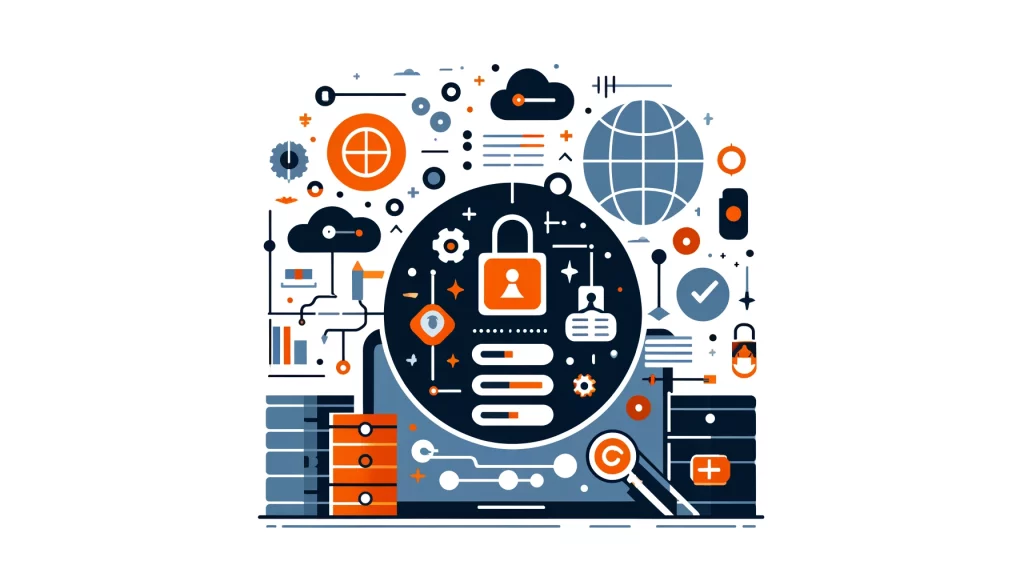
SQL Server Authentication

SQL Server authentication is a critical aspect of database security that every administrator must understand. It is the process of verifying the identity of a user attempting to access a SQL Server database.
Choosing the right authentication mode is essential to ensure that only authorized users can access sensitive data. This article will discuss different methods for logging into SQL Server. It will also cover the most effective ways to ensure its security.
Understanding SQL Server Authentication
To access a SQL Server database, users need to enter the right username and password. SQL Server authentication is when credentials are checked to make sure the user is allowed to access the database. This process keeps the database safe from unauthorized users. It makes sure only approved users can see, change, or delete information in the database.
There are different ways to configure SQL Server authentication. One way is using Windows authentication, where users can access the database using their Windows login credentials. Another way is using built-in authentication, where users need to enter a separate username and password.
Users commonly use SQL Server authentication in situations where they do not have a Windows account. It is also used when connecting to a SQL Server database from a non-Windows platform.
When logging in, SQL Server verifies the login details with the user accounts in the database’s security system. If the login information is correct and the user has the right permissions, they can access the database. If the credentials are incorrect or the user does not have the required permissions, access is denied.
It is important for users to keep their credentials secure and not share them with others to prevent unauthorized access to the database. Additionally, database administrators should regularly review and update user accounts and permissions to ensure that only authorized users have access to sensitive data. By using strong authentication, organizations can keep their databases safe from security threats and ensure their data stays secure.
To log in, the user’s username and password are checked against the database’s security settings.
SQL Server Authentication Modes
SQL Server offers three authentication modes: SQL Server authentication, Windows authentication, and mixed authentication.
1. SQL Server Authentication
SQL Server authentication is the simplest mode, where users are verified by SQL Server using a username and password. When a user attempts to log in, SQL Server checks the provided credentials against the database’s security settings. If the credentials match, the system grants the user access to the database.
Example: Imagine a web application that connects to a SQL Server database. The application uses a dedicated SQL Server login with a username and password to authenticate and access the database.
2. Windows Authentication
When a user attempts to connect to SQL Server using Windows authentication, the server verifies their Windows account token. The server then determines if the user has permission to access the database.
Example: Consider a company where all employees use Windows accounts to log in to their computers. When an employee needs to access a SQL Server database, they can use their Windows account to authenticate seamlessly, without the need for a separate SQL Server login.
3. Mixed Authentication
Mixed authentication, also referred to as SQL Server and Windows authentication, allows users to connect using either SQL Server authentication or Windows authentication. This mode is commonly used for backward compatibility with older applications that may not support Windows authentication.
Example: An organization may have a legacy application that requires SQL Server authentication, while newer applications use Windows authentication. Mixed authentication allows both types of applications to connect to the same SQL Server instance.
Best Practices for SQL Server Authentication
To ensure the security of your SQL Server database, follow these best practices when implementing authentication:
1. Use Windows Authentication Whenever Possible
Windows authentication is considered safer than SQL Server authentication for several reasons. One main advantage is that it uses the user’s Windows account token, which is controlled by the operating system. Users don’t have to remember or type in a different username and password to access the database. Instead, they can simply use their existing Windows credentials to authenticate themselves.
By using Windows authentication, the risk of password-related vulnerabilities is significantly reduced. Users don’t have to make or keep track of different passwords for the database. This helps reduce the risk of hackers or thieves stealing passwords. This can help to enhance the overall security of the system and protect sensitive data from unauthorized access.
Furthermore, Windows authentication simplifies password management for both users and administrators. Users do not need to remember multiple passwords for different systems, which can be a common source of frustration and security risks. Administrators can easily manage user accounts by using existing Windows accounts and permissions to control database access.
Overall, Windows authentication offers a more secure and convenient way to authenticate users and manage access to the database. This method uses the user’s Windows account token instead of passwords. It aims to improve security and make password management easier. Additionally, it helps safeguard sensitive data from threats.
2. Disable Unused SQL Server Logins
Regularly review the list of SQL Server logins and disable or remove any unused or unnecessary accounts. This practice helps minimize the attack surface and prevents unauthorized access through dormant accounts.
When an employee leaves, their SQL Server login should be disabled or removed right away to prevent any misuse.
3. Implement Strong Password Policies
When using SQL Server authentication or mixed authentication, enforce strong password policies for all SQL Server logins. Require users to create complex passwords that include a combination of uppercase and lowercase letters, numbers, and special characters. Regularly prompt users to change their passwords and avoid using easily guessable or common passwords.
Create a strong password by using at least 12 characters. Include one uppercase letter, one lowercase letter, one number, and one special character. Remember to change your password every 90 days. Change your password every 90 days.
4. Apply the Principle of Least Privilege
Grant users only the minimum permissions necessary to perform their tasks. Avoid assigning excessive privileges to user accounts, as this can increase the risk of unauthorized access and data breaches. Regularly review user permissions and adjust them as needed.
For instance, a user creating reports should only see the required tables. They should not have full control over everything.
5. Monitor and Audit Login Activity
Enable login auditing in SQL Server to track successful and failed login attempts. Check audit logs often to find any strange activity, like many failed login tries or logins from unknown places. Promptly investigate any anomalies and take appropriate action to mitigate potential security threats.
Set up SQL Server to log failed login attempts. Create alerts to notify administrators when a certain number of failed attempts occur.
Conclusion
SQL Server authentication is a vital component of database security. You can protect your important information by learning how to prove your identity and following good advice. This will ensure that only the right people have access to your personal data. Use Windows authentication, disable unused logins, use strong passwords, limit privileges, and check logins regularly for security.
Focusing on authentication security helps protect your database from unauthorized access. It also ensures that your data remains secure.
DataSunrise offers possibilities to implement advanced identity and access management into proxies of a wide variety of databases, including SQL Server. Contact our team to book a demo and explore DataSunrise now.
